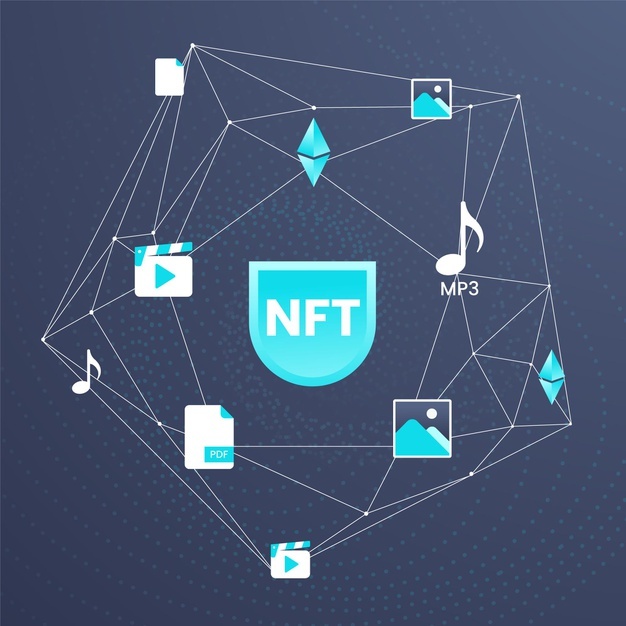
These days, the only thing everyone in the technology industry can talk about is Non-fungible Tokens or NFTs. The year 2021 saw several famous athletes, entrepreneurs, and musicians join the NFT craze. People like Michael Jordan, 2 Chainz, and Mark Cuban are some of the newest entrants into this technology craze. Who could forget Jack Dorsey selling his first tweet for 2.9 million USD or Beeple’s historic NFT sale of 69 million USD? The frenzy surrounding NFT is substantial, and it will only grow in the coming months.`
Smart contracts and NFTs are often linked to digital assets: however, the technology can apply to discrete physical assets like concert tickets, limited-edition records, etc. The future may see their use in transactions for significant assets like vehicles and houses. Before we dive into the idea of minting an NFT, let us first understand the two technologies, the process involved in NFT transactions, and the steps to avoid.
NFTs And You
So, what is an NFT? NFT is a token or a digital asset stored on a transparent and secure blockchain ledger. An NFT can be a video clip, audio recording, picture, diagram, or collectible. Hence, an NFT is a digital asset linked to a discreet and unique asset, making it one-of-a-kind. A user can turn their digital asset into an NFT through a process called minting.
Like Bitcoin, NFTs have security, transparency, and immutability. NFTs can also store large amounts of data and unique information. This feature makes a toke ‘non-fungible and how they are stored in a smart contract. These contracts are lines of computer code that start executing their functions upon meeting a specific set of conditions.
Blockchain technology, particularly NFTs, enable digital scarcity. Some data from an NFT can still be replicated and shared, but the certificate of authenticity and the asset’s legal rights remain on a single NFT. The technology is available on blockchain networks like Ethereum. These platforms provide the certificate of authenticity and legal rights to the digital asset.
Smart Contract Overview
Smart contracts remain one of the most powerful features of blockchain technology. Think of a smart contract like a digital contract. Here, there exist the terms of agreement between two users. A user can program a smart contract to self-execute under the right conditions.
Several organizations are taking the appropriate steps to create smart contracts that can be used in a court of law. This solution will most likely be a smart contract where the code will create a document that defines the contract terms.
Smart contracts can also trigger other smart contracts or create new events during their execution. A smart contract NFTcan hold assets and crypto within them. These assets can be distributed on execution, following a specific set of conditions met in the agreement.
Interaction Between NFTs And Smart Contracts
There are two ways where a smart contract and NFT interact with each other.
1.NFTs can be embedded into smart contracts. A smart contract can own an NFT and transfer the same NFT to a user or another contract. This transfer is set by the rules and events described in the smart contract.
2.Conversely, smart contracts can be embedded in an NFT. The smart contract can call and access assets inside the NFT. For example, a user can use a smart contract to listen to a song embedded in an NFT. ,First the user agrees to the terms set out by the smart contract. Next, the user pays the specified fee. The payment goes through and the smart contract queues up the song for listening. This process will occur in the background while the user listens to the music.
The idea of combining Smart contracts and NFT provides users with the flexibility to access a significant number of use cases. There exists the potential to create robust and complex contracts and agreements by combining the two. The underlying blockchain technology makes the contract tamper-proof, auditable and transparent. This process will significantly reduce and arbitration process in the future.
NFT Smart Contract Examples
Tournament organizers could use a series of smart contracts and NFT combinations for gaming tournaments. A player’s items can be embedded in NFTs. There can also be a series of smart contracts, enabling users to agree upon a set of rules. These rules will define how the assets in the competition will go to the round winner.
Another smart contract NFT example is in the streaming industry. Each movie or TV episode can be embedded in an NFT. Users can use a smart contract to access the show, makes a payment, and the smart contract starts streaming the movie or TV episode for viewing.
The best use case for a smart contract NFT lies in the art world. Here, artists can embed their art into an NFT then create a smart contract to define its terms of use. Physical art galleries can access the art on a physical screen while dividing the revenue they generate with the artists. The revenue generated is based on the terms agreed in the smart contract.
Though blockchain touts impressive security and stability, any new industry is ripe for fraud and misuse. A most recent example happened during an NFT auction for a drawing by a famous artist. The NFT included reproduction and IP rights in perpetuity, but the art was pulled after the artist’s estate claimed it still owned all copyrights in the sketch.
Another issue is that since NFTs are data existing in cyberspace, there is always the chance of non-permanency and losing access to digital assets linked to NFTs.
Conclusion
Blockchain technology is the major reason for the emergence of NFTs and smart contracts. Users have a range of NFT standards they can consider before minting their work. The nature of blockchain will enable users to transact through different platforms from a single point. This feature means that users could access NFTs and smart contracts on various platforms from their preferred location. Blockchain can also secure assets and transactions while also ensuring real-time audibility.
NFTs have numerous enterprise use cases and have massive implications for DRM and the media world. We may not know what those are, but we know that NFTs will complement the digital world and help create a transparent and secure internet.



